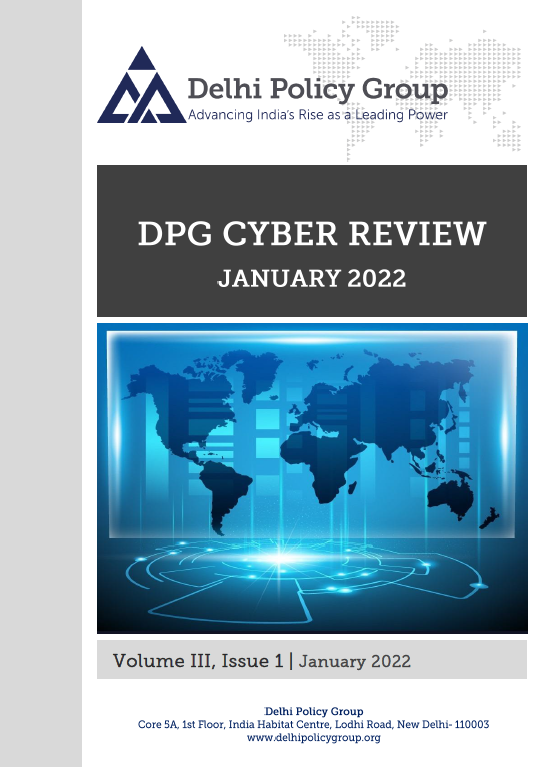Vol. III, Issue 1
The onset of 2022 has seen global geo-political tensions impacting the cyber space. Adversaries continue to invade Indian cyberspace, signalling the continuing shift of conflicts to the grey zone. The fourth quarter of 2021 saw an all-time peak in cyber-attacks, particularly after the discovery of Log4j vulnerabilities.
Semiconductor supply chains in India are being strengthened with several programs including “Chips2Startup” and “design linked incentives”, to implement the $10 billion incentive scheme for chip manufacturing announced last month. The government released a 5-year roadmap for the electronics sector titled “$300 bn Sustainable Electronics Manufacturing & Exports by 2026” and “National Strategy on Blockchain”. 5G is likely to be rolled out by private telecom players in 2022-23.
The Global Risk Report 2022 released by the World Economic Forum (WEF) warned that geopolitical rifts around digital sovereignty have hindered potential cross-border collaboration to undertake “established” or “effective” international risk mitigation efforts in areas of cross border cyberattacks, mis-information and artificial intelligence.
Geopolitical contestation over Ukraine have turned cyberspace as a battle ground among adversaries, heralding “Hybrid Warfare” as a precursor to kinetic war. Cyberattacks are also being witnessed against the International Committee of the Red Cross (ICRC), which have compromised personal data and confidential information on more than 515,000 highly vulnerable people.
In the US, the telecom and aviation industry differed over the rollout of 5G cellular networks near airports, which could interfere with legacy navigation systems of aircraft. A temporary solution has avoided an immediate crisis, but a long-term solution would require time to deploy retrofitted aircraft altimeters with new standards.
To reduce the risk of future supply-chain disruptions, the US, Europe and other countries, including India, are devising massive subsidy and incentive packages. In the US alone, the semiconductor industry has announced nearly $80 billion in new investments through 2025. In response to recent high profile attacks, the US administration extended its critical infrastructure cybersecurity initiative to the water and wastewater sectors, besides the electric grid and natural gas pipelines.
India hosted the first Colombo Security Conclave Virtual Workshop on “Developing Regional Cyber Security Capabilities on Defensive operations, Deep/Dark Web handling and Digital Forensics” on January 10-11.



